EB 5 Visa Source of Funds | Currency Swaps | External Funding Opportunities For Eb-5 Foreign Investors |Trends and Best Practices.
USCIS's approach to adjudicating the lawful source of funds criterion for "currency swaps" is a frequent mechanism for EB-5 investors to shift currencies. This article covers USCIS's attention on currency swaps, discusses current legal challenges, and offers practice tips for stakeholders to prevent source-of-fund denials.last updated Tuesday, November 18, 2025
#eb5 source of funds #eb 5 visa source of funds
| | by Sidra Jabeen | Content Manager, Paperfree Magazine |
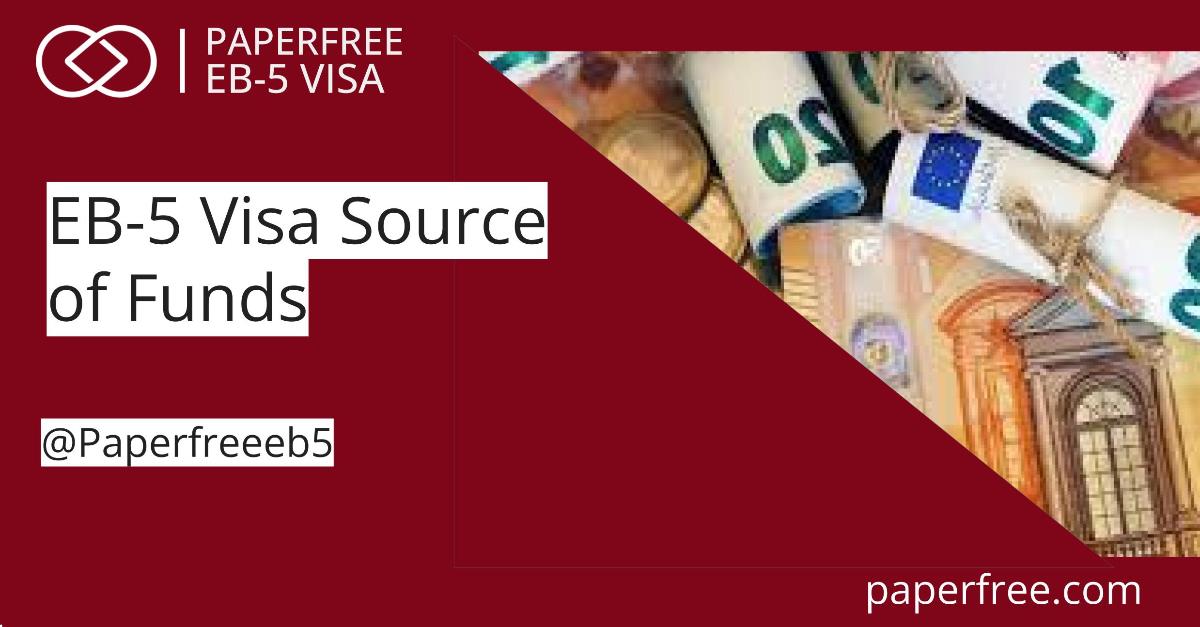
QUICK LINKS
AD
Get Access to EB 5 Visa Investment Projects
Key Points
- USCIS has increased scrutiny on the source of funds, particularly for currency swaps.
- Investors using currency swaps must prove the legal origin of funds and ensure compliance with local laws.
- Thoroughly vet third-party currency exchangers and document the source of their funds.
- Use written contracts to formalize currency swaps and avoid using cash for transactions.
- Explore external funding options, including direct loans, bridge loans, and family loans, to meet the increased EB-5 investment minimum.
- Work with legal experts to ensure compliance with USCIS's evolving source-of-funds requirements.
In recent years, "source of funds" difficulties have become increasingly prevalent in EB-5 adjudications in the United States, previously overlooked.
Citizenship & Immigration Services (USCIS) has broadened its inquiry. The source-of-funds landscape has become complex, with changes in USCIS's approach to "currency swaps," heightened demands for evidence, scrutiny of I-829 issues, and examination of non-EB-5 investors' sources.
The article focuses on the first significant trend: USCIS's approach to adjudicating the lawful source of funds criterion for "currency swaps," a frequent mechanism for EB-5 investors to shift currencies. This article draws USCIS's attention to currency swaps, discusses current legal challenges, and offers practice tips for stakeholders to prevent denials based on the source of funds.
Background on Funding Requirements Sources
Since 1991, the EB-5 Program has required investor funding from legitimate sources. The EB-5 criteria are outlined in two rules. The first defines "capital" and states that assets acquired through illegal means, such as criminal activity, do not qualify as "capital" for EB-5 purposes.
The second definition, "regulation," outlines the proof EB-5 investors must provide to demonstrate that they "invested or are actively in the process of investing capital obtained through lawful means."
In 1998, the Immigration and Naturalization Service (USCIS's predecessor agency) issued four previous EB-5 decisions. Three out of four decisions used the source-of-funds requirement to deny investor petitions. For example, Izumi was an applicant for the EB-5 program whose case was reviewed by the U.S. Citizenship and Immigration Services (USCIS) Administrative Appeals Office (AAO) in 1998.
In the Matter of Izummi, the agency found that the applicant failed to show the lawful source of his investment funds, including the source of hundreds of thousands of dollars in bank accounts, his income level, and the origin of the funds.
Izumi, Soffici, and Ho all applied for the EB-5 program, and their cases were reviewed by the U.S. Citizenship and Immigration Services (USCIS) Administrative Appeals Office (AAO).
These cases, "Matter of Soffici" and "Matter of Ho," are referenced as legal precedents within the EB-5 program. Still, Soffici and Ho's individual identities are not publicly available due to privacy concerns. The details of their cases illustrate the importance of providing sufficient evidence of a lawful source of funds for EB-5 applications.
In Matter of Soffici, the applicant claimed to have acquired funds from the sale of a house and business, but did not produce any evidence of ownership or the sale price.
In Matter of Ho, the agency determined that the investor needed to provide a valid source of funds for their EB-5 investment since the wire transfer receipt did not specify the bank account(s) from which the funds originated. The investor and his spouse did not sell any assets to make an EB-5 investment, and the investor did not provide documentation to support their claimed occupation or income.
Investors should have documented the origins and path of their EB-5 investment, resulting in these decisions. For years, USCIS denied I-526 petitions if the investor's failure to document the origins and path of their EB-5 investment was straightforward.
This included significant inconsistencies in the source of funds or major evidentiary gaps, as seen in previous decisions.
However, this is no longer the reality. Over the last five years, USCIS has significantly altered its regulations and procedures for adjudicating sources of funds at both the I-526 and I-829 stages. It has primarily done so in cases involving "currency swaps."
Currency Swaps and USCIS's Adjudicatory Shift
EB-5 investors from countries with currency restrictions, such as Vietnam and China, have traditionally used "currency swaps" (also known as "informal value transfers") to relocate their assets to the United States and make their investments.
A currency swap involves an investor contracting with a local third party (person or firm) that owns U.S.-dollar assets outside the investor's jurisdiction. The investor transmits local currency from their home country to the third party, who then transfers the same amount in US dollars to the investor's US account or directly to the NCE on their behalf.
Previously, USCIS did not closely monitor "currency swaps." In early 2017, USCIS issued many requests for evidence (RFEs), notices of intent to deny (NOIDs), and denials in such cases, as noted by others. The USCIS has raised the following issues:
Establishing the legal origin of the third-party currency exchanger's funds. Before 2017, USCIS would not typically request evidence of the third party's
The currency exchanger obtained assets through a currency swap. USCIS now requires investors to prove how currency exchangers obtained the US dollars for the currency swap. USCIS now requires investors to demonstrate both the third party's legal funding and the source of the U.S. dollars used in the currency swap.
Establishing the legality of the currency swap. USCIS now requires evidence that currency swaps were legal under local law, that the currency exchanger had a license, or that the currency swap was legal in the local government.
Proving the "path of funds" in the currency exchanger's internal accounts. USCIS now requires verification of the funds' passage via the currency exchanger's accounts and the "path of funds" requirement for investors to track them back to a lawful source. Investors must prove each step of the currency transfer process using the exchanger's internal accounts.
Litigation Challenges and Currency Swap Policies
Investors who were denied currency swaps have brought their claims to federal court. One case involving currency swaps has already been determined, while others are still pending. In case 8, an investor employed a "currency swap" to transfer money to the US. However, USCIS dismissed the petition due to the investor's failure to demonstrate that the funds were legitimately derived from the third-party currency exchanger.
The investor challenged the verdict with many justifications, but the court dismissed them.
The court rejected the investor's argument that the EB-5 statute does not mention a lawful source-of-funds requirement and thus exceeds USCIS's statutory authority to impose one. Instead, the court ruled that USCIS's requirement was consistent with the statute and was reasonably interpreted.
The court rejected the investor's argument that requiring investors to prove a third party's lawful source of funds was a substantial rule that required USCIS to go through "notice and comment" procedures, which it did not do. Instead, the court ruled that the requirement interprets existing precedent.
The court rejected the investor's claim that USCIS's policy was retroactive. This was because the investor's I-526 petition was filed in 2018 after USCIS's currency-swap policy had changed.
The court rejected the investor's claim that USCIS's currency swap policy was arbitrary and capricious in comparison to the more liberal "friends and family" method (also known as the "ten friends" method)10. The court found no evidence that USCIS differentiated between the two methods.
The court upheld the I-526 denial despite USCIS's right to investigate third-party currency exchanges. However, the information provided needed to prove that the monies were legally obtained.
Despite the setback, there is still hope for development through a lawsuit. Nguyen is not a binding precedent and was appealed to the Ninth Circuit. Nguyen did not consider several reasons advanced in other cases challenging currency-swap denials, which are currently ongoing in different circuits.
Furthermore, Nguyen suggests a retroactivity argument for instances filed before 2017. IIUSA is pursuing litigation under the Freedom of Information Act to obtain additional information about USCIS's policy shift. This evidence could support federal court lawsuits. Nguyen does not represent the federal court's final decision in this crucial legal case.
Best Practices of Currency Swap for EB5 Source of Funds
As federal courts have yet to overturn USCIS's currency-swap procedures, what can EB-5 stakeholders do to avoid RFEs, NOIDs, and denials? Here are some suggestions to consider:
- Proper Vetting of Third-Party Currency Exchangers
USCIS requires third-party currency exchangers to prove the origin of their funding. Thus, stakeholders must ensure that the US dollars utilized were obtained legally. As a result, investors must thoroughly scrutinize third-party partners. Investors and their counsel should hire professionals in their home country to undertake vetting and request necessary documents (e.g., bank account records and tax returns) before USCIS requests them. - Verify the third party's currency exchange license or ensure that currency swaps are legal.
USCIS requires investors to prove that the trade was lawful, not just that the third party's currency was legally sourced.
Local licenses for money exchangers are usually adequate. To ensure compliance with local law, investors should obtain an expert opinion letter from an attorney in their country of origin. This letter should provide detailed facts regarding the proposed currency swap. - Consider creating a written contract to document the currency swap.
A contract detailing the currency swap is crucial for proving the investor's funding path. Without a formal agreement, USCIS may dispute whether the funds invested in the NCE are indeed the investors' (rather than those of the third-party currency exchanger). A written contract ensures the third party's cooperation in providing necessary documentation and financial information for approval, even if it is unfamiliar. - Do not use cash. In many countries, cash transactions are common
Using cash to transfer currency to a third party disrupts the "path of funds" and makes it difficult to document for USCIS. Transfers should be done through banks or their equivalents.
USCIS's scrutiny of currency swaps is expected to expand unless federal courts challenge its overreach. To prevent I-526 denials, EB-5 stakeholders should plan in advance with currency exchange providers.
EB-5 source of funds, loan, and external funding opportunities.
The increased investment minimum of $800,000 (or $1,050,000 in Targeted Employment Areas) in the EB-5 program can be challenging for some investors. External funding opportunities are emerging to bridge this gap, making participation more accessible. Here are some options to consider:
U.S.-Based Lending Programs
- Direct Loans
Many Regional Centers and issuers partner with lenders to offer direct EB-5 investment loans. These loans are typically secured by personal assets or the EB-5 investment, making them accessible to qualified investors with good creditworthiness. - Bridge Loans
Some lenders offer bridge loans to cover the EB-5 investment amount until the investor sells an asset or receives other funds. This option can be helpful for investors who plan to liquidate assets later but need immediate funding for their EB-5 participation.
Alternative Financing Solutions
- Family Loans
Borrowing from family members can be viable, but ensure proper documentation and repayment terms are established to comply with program requirements. - Friends and Associates
Loans from friends or associates can also be considered, again with clear documentation and adhering to all regulations. - Home Equity Loans
Using a home equity loan or line of credit can unlock capital, but remember the risks of leveraging your primary residence.
Considerations and Cautions
- Due Diligence
Thoroughly research and compare lending options, considering interest rates, terms, and potential risks before committing. - Legal Compliance
Ensure all loan agreements comply with EB-5 program regulations and avoid potential fraud concerns. - Financial Eligibility
Lenders will assess your creditworthiness and ability to repay, so maintain a good financial standing. - Impact on Investment Timeline
You can factor in loan repayment terms when you calculate your investment timeline and potential returns.
Frequently Asked Questions
Could you explain the significance of showing a lawful source of funds in the EB-5 program?
Demonstrating a lawful source of funds is crucial for EB-5 investors, as it ensures compliance with program regulations. USCIS requires investors to prove that their invested capital is obtained through legitimate means and is free from illegal activities. Please establish the lawful source of funds to avoid petition denial.
How has USCIS's approach to adjudicating lawful sources of funds evolved in recent years?
Over the last five years, USCIS has significantly altered its regulations and procedures, particularly in cases involving "currency swaps." The increased scrutiny demands evidence on the legal origin of third-party currency exchangers' funds, the legality of currency swaps under local law, and verification of funds' passage through internal accounts.
What are "currency swaps," and why are they under increased USCIS scrutiny?
"Currency swaps" involve investors relocating assets to the U.S. by contracting with local third parties. USCIS now closely monitors these transactions, requiring proof of legal funding, the origin of U.S. dollars, compliance with local law, and verification of the funds' path through the third party's accounts.
How can EB-5 stakeholders navigate USCIS scrutiny on "currency swaps"?
To avoid RFEs, NOIDs, and denials, stakeholders should vet third-party currency exchangers thoroughly, verify their licensing and the legality of swaps, and consider creating formal contracts documenting the currency swap. Avoiding cash transactions and utilizing banks for transfers are also recommended practices.
What external funding opportunities are available to meet the increased EB-5 investment minimum?
External funding options include U.S.-based lending programs offering direct or bridge loans. Investors can also explore family loans, loans from friends or associates, and home equity loans. Thorough due diligence, legal compliance, and financial eligibility assessments are essential before considering external funding.
Book Your Free Consultation with Paperfree EB-5 Visa Experts. Get Personalized Advice and an Investment Plan. Book Your Free Consultation Today!

Conclusion
Overall, there are seven qualified funding sources for the EB-5 Visa:
- A loan is a debt obligation where the lender may be a financial institution or an individual.
- A gift is something that is given freely and without payment.
- Inheritance is the transfer of a deceased individual’s possessions to their loved ones.
- Savings. A bank statement is a document sent to the account holder by the bank every month. It summarizes the account’s transactions from the preceding month.
- Real estate assets are tangible estate-related assets, improved or unimproved real property, and any indirect or direct interest.
- Employment earnings are the income earned via employment.
- Stock is a security representing ownership of a portion of the issuing company.
Exploring external funding requires careful planning and consideration. Consult with financial advisors and immigration attorneys experienced in EB-5 financing to assess your options, navigate legal requirements and EB-5 source of funds, and choose the most suitable solution for your circumstances. Remember, responsible borrowing and due diligence are crucial for a successful EB-5 journey.
Pages Related to #eb5 source of funds
- Set Aside EB-5 Visas Benefits and Advantages
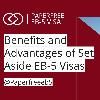
- July 2025 Visa Bulletin: EB-5 Investment Visa Program Shows Positive Movement

- EB-5 for Tech Entrepreneurs: Immigration Program for Startup Founders | Paperfree
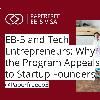
- EB-5 Investment Protection: How Experienced Developers Safeguard Your Capital | Paperfree

- U.S.-Based EB-5 Investors Surge in 2025 | Concurrent Filing & Loan Repayment Explained

- Investment timeframe for Form I-829 approval for EB5 Visa
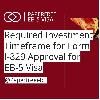
- Joseph Edlow Confirmed as New USCIS Director
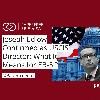
- EB 5 due diligence checklist. EB-5 due diligence process.

Popular Page
Benefits of the EB-5 Visa Program| A Comprehensive Guide
Book a Free Complimentary Call
Search within Paperfree.com
real estate investing Investment Visa USA Investment Magazine Private Real Estate Funds real estate funds
